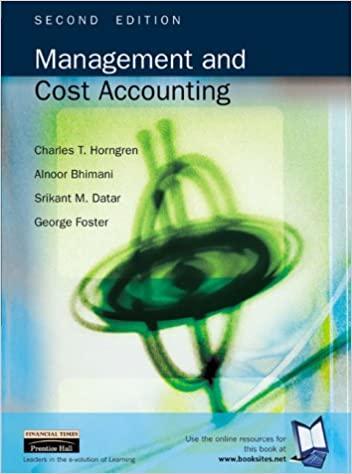Question
Since the SUTA rates changes are made at the end of each year and there is much discussion about changes to the FUTA rate, the
Since the SUTA rates changes are made at the end of each year and there is much discussion about changes to the FUTA rate, the available 2017 rates were used for FUTA and SUTA.
Note: For this textbook edition the rate 0.6% was used for the FUTA tax rate for employers.
Example 5-11
To illustrate the tax saving that may be realized as a result of making voluntary contributions, consider the following case of Krane Company, which is subject to the unemployment compensation law of a state that uses the reserve-ratio formula to determine experience ratings. The following contribution rate schedule applies for 2019:
| Reserve Ratio | Rate |
| 0% to less than 1% | 6.2% |
| 1% to less than 1.4% | 5.6% |
| 1.4% to less than 1.8% | 5.0% |
| 1.8% to less than 2.2% | 4.4% |
| 2.2% to less than 2.6% | 3.8% |
| 2.6% to less than 3.0% | 3.2% |
| 3.0% and over | 2.6% |
For the three 12-month periods ending on June 30, 2018, the company had an average annual taxable payroll of $330,000. This is the base that the state uses as the average payroll. As of June 30, 2018, the credits to the employer's account exceeded the benefits paid by $6,800. Thus, the 2018 reserve ratio is 2.06 percent ($6,800 $330,000), which would result in the assignment of a 4.4 percent tax rate, as shown in the preceding table. If the employer's 2019 total taxable payroll were $390,000, the SUTA contribution would amount to $17,160.
If Krane Company makes a voluntary contribution into the state fund within the time period specified by the state law, the tax for 2019 will be less. For example, if the company contributes $460, the reserve ratio will be 2.2 percent ($7,260 $330,000). As a result, the tax rate will be reduced to 3.8 percent, with the following savings realized in 2019:
| Tax payment with no voluntary contribution (4.4% $390,000) | $17,160 | ||
| Tax payment with voluntary contribution | $460 | ||
| Reserve ratio (3.8% $390,000) | 14,820 | 15,280 | |
| Tax savings | $ 1,880 |
As of June 30, 2017 (the computation date for the 2018 tax rate), Sanchez Company had a negative balance of $1,190 in its unemployment reserve account in State A. The company's average payroll over the last three 12-month periods amounted to $520,000. The unemployment compensation law of State A provides that the tax rate of an employer who has a negative balance on the computation date shall be 7.2% during the following calendar year.
Using the tax rate schedule presented below, compute the following:
| Reserve Ratio | Contribution Rate |
| 0.0% or more, but less than 1.0% | 6.7% |
| 1.0% or more, but less than 1.2% | 6.4% |
| 1.2% or more, but less than 1.4% | 6.1% |
| 1.4% or more, but less than 1.6% | 5.8% |
| 1.6% or more, but less than 1.8% | 5.5% |
| 1.8% or more, but less than 2.0% | 5.2% |
| 2.0% or more, but less than 2.2% | 4.9% |
| 2.2% or more, but less than 2.4% | 4.6% |
| 2.4% or more, but less than 2.6% | 4.3% |
| 2.6% or more, but less than 2.8% | 4.0% |
| 2.8% or more, but less than 3.0% | 3.7% |
| 3.0% or more, but less than 3.2% | 3.4% |
| 3.2% or more | 3.1% |
a. The smallest voluntary contribution that Sanchez Company should make in order to effect a change in its tax rate. $
b. The amount of the tax savings as a result of the voluntary contribution if Sanchez Company's taxable payroll for 2018 is $660,000. $
Step by Step Solution
There are 3 Steps involved in it
Step: 1

Get Instant Access to Expert-Tailored Solutions
See step-by-step solutions with expert insights and AI powered tools for academic success
Step: 2

Step: 3

Ace Your Homework with AI
Get the answers you need in no time with our AI-driven, step-by-step assistance
Get Started


